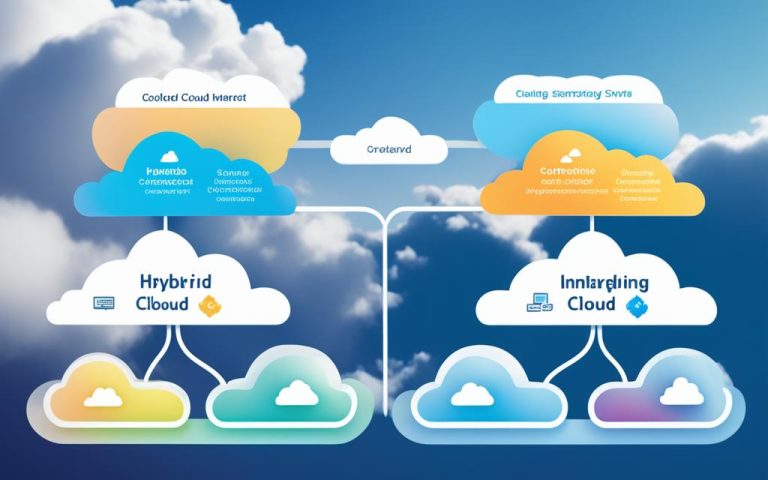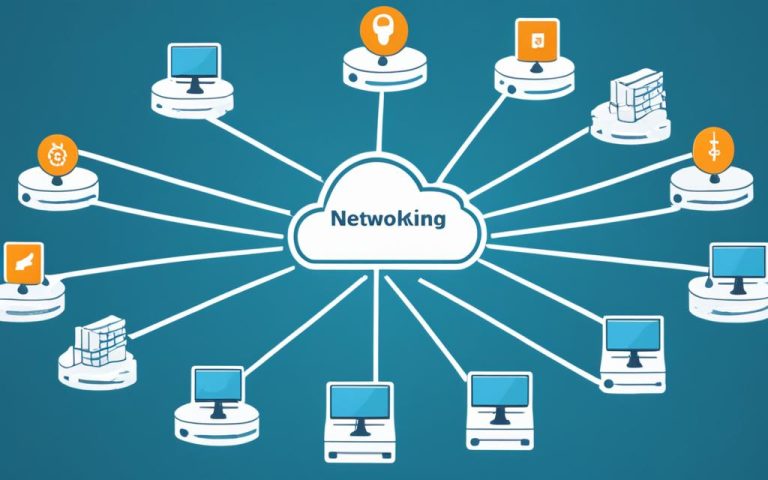As organizations increasingly rely on cloud network operating systems (OS) for their business operations, it becomes vital to prioritize the security and performance of these systems. One of the key aspects of maintaining a secure and efficient cloud network OS is effective patch management. Neglecting to apply patches promptly can expose systems to potential cyber threats and compromise sensitive data.
In this article, we will explore the importance of OS patch management in cloud environments and provide valuable insights into implementing effective patch management strategies. We will delve into best practices for patching cloud environments, discuss challenges that organizations may face, and examine the responsibilities and types of patching in different cloud deployments. By the end of this article, you will have a comprehensive understanding of OS patch management in cloud network OS and the strategies to enhance the security and performance of your systems.
Understanding Cloud Patch Management
Cloud patch management plays a crucial role in ensuring the security and functionality of cloud networks. It involves applying code updates to applications, operating systems, and other data within the cloud environment. Similar to updating smartphone apps to fix vulnerabilities and add new features, cloud patch management ensures that software apps are up to date and secure.
By regularly applying code updates, organizations can enhance the security posture of their cloud networks, minimizing the risk of cyber threats and data breaches. Patch management also helps keep applications and operating systems running smoothly, maximizing system performance.
Let’s take a closer look at the importance of cloud patch management and explore examples of deploying cloud patches.
“Cloud patch management ensures that software apps are up to date and secure.”
Importance of Cloud Patch Management
Cloud patch management is essential for several reasons:
- Security: Applying patches helps address known vulnerabilities, keeping cloud networks protected against cyber threats.
- Compliance: Regular patching ensures that organizations meet industry regulations and security standards.
- Performance: By keeping applications and operating systems up to date, organizations can optimize system performance and avoid performance-related issues.
- Reliability: Patch management helps minimize system failures and downtime, ensuring the availability of cloud services.
By implementing an effective cloud patch management strategy, organizations can mitigate security risks, maintain compliance, and maximize the overall efficiency of their cloud environments.
Examples of Deploying Cloud Patches
There are various methods for deploying cloud patches:
- Automated Patching: Implementing automated patch management tools enables organizations to streamline the patching process, reducing human error and ensuring timely updates.
- Centralized Patch Management: By centralizing patch management, organizations can achieve consistency across their cloud environment, simplifying the deployment and tracking of patches.
- Cloud-Native Patching: Leveraging cloud-native approaches allows organizations to scale patch management seamlessly, aligning with the dynamic nature of cloud environments.
These examples demonstrate the versatility and flexibility of cloud patch management, providing organizations with efficient and effective ways to keep their cloud networks secure and up to date.
Patch Management Tools
| Tool | Description |
|---|---|
| 1. AWS Systems Manager | AWS Systems Manager automates the process of patching Amazon EC2 instances and managing patch compliance. |
| 2. Microsoft Endpoint Configuration Manager | Microsoft Endpoint Configuration Manager provides comprehensive patch management capabilities for Microsoft Azure cloud environments. |
| 3. Google Cloud Operations Suite | Google Cloud Operations Suite offers patch management solutions to ensure the security and compliance of Google Cloud Platform (GCP) environments. |
Best Practices for Patching Cloud Environments
To effectively patch cloud environments, organizations should follow best practices. These practices aim to enhance the efficiency and effectiveness of patching cloud environments. By automating patch management, reducing human error, and speeding up the patching process, organizations can ensure timely security updates. Additionally, continuously patching systems helps maintain the immediate security of cloud environments.
Implementing a cloud-specific patch management policy is another best practice. This policy outlines guidelines and procedures tailored to the unique challenges and requirements of managing patches in the cloud. It ensures that organizations have a structured approach to patch management.
A strong asset management system is essential for effective patching. This system allows organizations to maintain an inventory of their cloud assets and track the software versions, making it easier to monitor and manage patches.
Centralizing patch management is crucial for consistency. By consolidating the patch management process in one central location, organizations can streamline operations, improve coordination, and ensure uniformity in patch deployment across cloud environments.
Adopting a cloud-native approach is another key best practice. This approach leverages cloud-native technologies and solutions to automate and scale patch management. It enables organizations to take full advantage of cloud capabilities and adapt to the dynamic nature of cloud environments.
It is also important to monitor and address cloud-specific vulnerabilities. Cloud environments have their own unique vulnerabilities, and organizations should stay informed about emerging threats and vulnerabilities that affect their cloud systems.
Best Practices for Patching Cloud Environments:
- Automate patch management to reduce human error and speed up the patching process.
- Continuously patch systems to ensure immediate security updates.
- Implement a cloud-specific patch management policy.
- Have a strong asset management system to track software versions.
- Centralize patch management for consistency.
- Adopt a cloud-native approach for scalability and automation.
- Monitor and address cloud-specific vulnerabilities.
Following these best practices will help organizations effectively patch their cloud environments, minimize vulnerabilities, and ensure the security and performance of their cloud systems.

Overcoming Challenges with Cloud Patch Management
Patching cloud environments can pose unique challenges that organizations must address to ensure effective cloud patch management. By understanding and proactively mitigating these challenges, businesses can maintain the security and performance of their cloud networks.
1. Testing Patches for Compatibility
One of the key challenges in cloud patch management is ensuring the compatibility of patches with existing systems and applications. Before deploying patches, it is essential to thoroughly test them in a controlled environment to identify any potential conflicts or disruptions they may cause. This testing process helps minimize the risk of system downtime or operational issues that could arise from incompatible patches.
2. Educating Staff on the Importance of Patching
Another challenge is ensuring that all staff members are well-educated on the criticality of patching and the potential risks associated with unpatched vulnerabilities. Implementing a comprehensive training program that emphasizes the importance of timely patching can help create a culture of awareness and responsibility throughout the organization. By empowering employees with the knowledge to identify and report vulnerabilities, businesses can enhance their overall security posture.
3. Developing a Robust Backup Strategy
During the patching process, there is always a small potential for system disruptions or unexpected issues. To safeguard against such incidents, businesses should develop a robust backup strategy that allows for quick data recovery in the event of any patch-related problems. Regularly backing up critical data ensures that any temporary setbacks can be swiftly addressed, minimizing the impact on business operations.
4. Regularly Reviewing and Updating Patch Management Strategy
Cloud environments are dynamic, with new technologies and threats emerging regularly. To stay ahead of these changes, it is crucial to regularly review and update the patch management strategy. This includes staying informed about the latest security vulnerabilities and industry best practices. Leveraging the expertise of security professionals and conducting periodic audits can help identify areas for improvement and ensure that the patch management strategy remains effective over time.
| Challenge | Strategy |
|---|---|
| Testing patches for compatibility | Thoroughly test patches in a controlled environment before deployment |
| Educating staff on the importance of patching | Implement a comprehensive training program to create awareness |
| Developing a robust backup strategy | Regularly backup critical data to minimize disruptions |
| Regularly reviewing and updating patch management strategy | Stay informed about latest vulnerabilities and best practices |
By addressing these challenges and implementing the recommended strategies, businesses can enhance their cloud patch management practices, ensuring the security and reliability of their cloud environments.
Patching Cloud Environments: Responsibilities and Types
Patching responsibilities in cloud environments can vary based on the type of cloud deployment. In public cloud environments like Amazon Web Services (AWS), Microsoft Azure, and Google Cloud Platform (GCP), the cloud provider assumes the responsibility of patching the underlying infrastructure. This includes the network, servers, storage, and other foundational components that support the cloud environment.
However, customers are responsible for patching their own instances and applications deployed within the public cloud environment. This means that organizations must actively manage and apply patches to their virtual machines, containers, databases, middleware, and other components specific to their cloud deployments. By taking ownership of these responsibilities, organizations can ensure the security and reliability of their cloud applications and data.
In private cloud environments, the responsibility for patching falls on the organization’s internal IT staff. Since private clouds are built and managed within the organization’s own infrastructure, it becomes their responsibility to apply patches to the underlying hardware, software, and other components of the private cloud.
Some organizations may choose to outsource their patching needs to third-party security or IT providers. These providers specialize in managing and maintaining the security and performance of cloud environments, including patch management. By leveraging the expertise of these providers, organizations can offload their patching responsibilities and focus on other core business activities.
To summarize:
| Cloud Deployment | Responsibilities |
|---|---|
| Public Cloud (AWS, Azure, GCP) |
|
| Private Cloud |
|
| Outsourced Patching |
|
Understanding the responsibilities associated with patching cloud environments is essential for organizations to effectively manage their cloud deployments and ensure the ongoing security and performance of their systems.
Conclusion
Effective OS patch management is essential for maintaining the security and performance of cloud network operating systems. By implementing best practices, automating the patching process, and overcoming challenges, organizations can ensure that their cloud environments are up to date and protected against cyber threats.
Patching responsibilities vary depending on the type of cloud environment, and it is crucial for organizations to understand their responsibilities and the associated processes. Whether it is a public cloud deployment where the cloud provider handles infrastructure patching, or a private cloud where internal IT staff takes on the responsibility, staying informed is key.
By prioritizing OS patch management and following industry best practices, organizations can optimize their system performance, safeguard against threats, and minimize the risk of data breaches. Regularly applying patches, having a robust backup strategy, and leveraging the expertise of security professionals are all important steps in maintaining a secure cloud network OS. In conclusion, adopting effective OS patch management strategies helps organizations create a strong foundation for their cloud environments.
FAQ
Why is patch management important for cloud network operating systems?
Patch management is crucial for maintaining the security and performance of cloud network operating systems. Neglecting to regularly apply patches can leave systems vulnerable to cyber threats, resulting in data breaches and other detrimental consequences.
What is cloud patch management?
Cloud patch management involves applying code updates to applications, operating systems, and other data within a cloud network. It ensures that all software apps are up to date and secure, similar to updating smartphone apps to fix vulnerabilities or add new features.
What are the best practices for patching cloud environments?
To effectively patch cloud environments, organizations should automate patch management to reduce human error and speed up the patching process, continuously patch systems to ensure immediate security updates, implement a cloud-specific patch management policy, have a strong asset management system, centralize patch management for consistency, adopt a cloud-native approach for scalability, and monitor cloud-specific vulnerabilities.
What challenges can arise with cloud patch management?
Patching cloud environments can come with challenges. To overcome these challenges, it is important to test patches before deployment to ensure compatibility and minimize the risk of system disruptions. Educating staff about the importance of patching and the potential risks of unpatched vulnerabilities is also crucial. Additionally, developing a backup strategy helps safeguard against any issues that may arise during the patching process.
What are the responsibilities for patching cloud environments?
Patching responsibilities in cloud environments can vary depending on the type of cloud deployment. In public cloud environments, the cloud provider is responsible for patching the underlying infrastructure, while customers are responsible for patching their own instances and applications. In private cloud environments, the responsibility falls on the organization’s internal IT staff. Some organizations may also rely on third-party security or IT providers for their patching needs.
How does effective OS patch management benefit cloud network operating systems?
Effective OS patch management is crucial for maintaining the security and performance of cloud network operating systems. By following best practices, automating the patching process, and overcoming challenges, organizations can ensure that their cloud environments are up to date and protected against cyber threats. Prioritizing OS patch management and implementing effective strategies optimize system performance, safeguard against threats, and minimize the risk of data breaches.



















